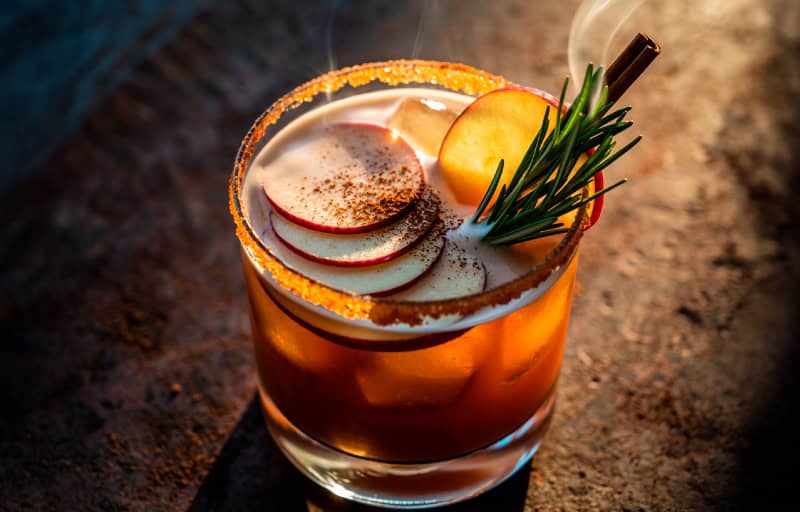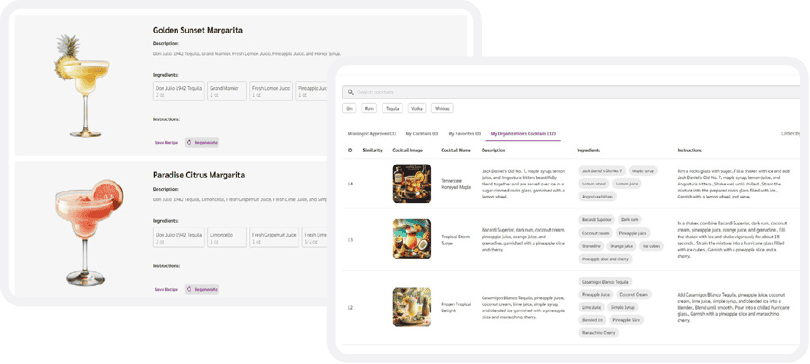The last five years have brought about a whirlwind of change for the beverage alcohol market, and the coming year will continue to reshape the industry as we know it.
With consumer values and preferences changing, it’s vital that brands know what alcohol trends to expect in 2026 — or risk falling behind the competition.
Here’s what changes and trends you can expect to emerge in the next year.
1. Consumers will continue to drink less
Alcohol consumption has declined significantly over the last three years, falling from 67% in 2022 to 54% in 2025 — and this trend shows no signs of stopping.
But why exactly are U.S. adults drinking fewer alcoholic beverages each year? While there’s no one reason for this shift, there are numerous contributing factors:
- Health concerns: More and more Americans have begun to perceive alcohol as having a negative impact on health, with 53% stating that drinking, even in moderation, is harmful.
- Generational shift: Gen Z has been shown to drink notably less than generations before them by a wide margin. These behaviors can be seen in trends like Sober October and Dry January.
- Sober curiosity: Sober curiosity has become a popular movement in recent years. Those who are sober-curious choose to experiment with an alcohol-free lifestyle, not because they necessarily have any issues with alcohol, but because they want to see what abstaining is like.
- Rising costs: With inflation on the rise, many consumers are cutting back on alcoholic beverage consumption in an effort to save money.
- Cannabis use: Many consumers’ recreational substance preferences have shifted from alcohol to cannabis, with the number of daily cannabis users exceeding alcohol consumers.
2. Non-alcoholic beverages will grow in popularity
As consumers continue to reduce alcohol consumption, they’ll invest more heavily in low-alcohol and non-alcoholic (NA) beverages. In fact, the non-alcoholic beverage market is expected to increase from $298.4 billion in 2024 to $457 billion in 2030, growing at an annual rate of 7.4%. This includes alcohol substitutions like non-alcoholic wines and beers.
As NA beverages gain popularity, they’ll also appreciate in quality and flavor. In the past, brands struggled to create NA drinks that could truly counter the taste of alcoholic beverages, producing thin-bodied substances that fell short in flavor. That’s why suppliers are focusing on improving the taste and overall quality of their NA products. As a result, low-alc and no-alc drinkers can enjoy the taste and social component of alcohol without the health effects.
Now, that’s not to say that NA beverages will replace alcoholic drinks entirely. While consumers are undoubtedly flocking to NA products, 92% of these buyers still invest in alcohol-containing beverages as well. So, NA and alcoholic products essentially go hand-in-hand (literally).
3. Functional beverages will take center stage
Nutrition has become a driving factor in consumers’ purchase decisions, with 62% stating that they select foods and beverages with health in mind. As a result, functional foods have begun to take the world by storm. In fact, the functional food and beverage market is projected to grow by 10.33% by the year 2032, equaling $793.6 billion.
Functional foods and beverages are goods that have been altered to have added health benefits, either through enrichment or fortification. For example, functional products may contain added vitamins, minerals, fiber, or probiotics for increased nutritional value.

In the beverage industry, prebiotic sodas, vitamin-infused water, and protein shakes have become increasingly popular in recent years. With the shift from alcoholic to NA beverages, functional drinks will likely become even more prominent in 2026 — and may even directly compete with alcohol products.
Does this mean alcohol brands will go functional, too? Alcohol can’t be made “healthy,” per se, but there could be an opportunity for suppliers to incorporate functional ingredients into their products, such as botanicals and antioxidants. However, alcohol does not have enough health benefits to be considered functional, so these additions would likely be in vain.
In the interest of health, alcohol drinkers may start gravitating toward low-sugar and low-calorie options like light beer and dry wine.
4. Consumers will choose sustainable products
Environmental responsibility is top-of-mind for today’s consumers. In fact, 46% of consumers are purchasing more sustainable products to reduce their environmental footprint, and 72% said they’d be willing to pay more for these eco-friendly alternatives.
For the alcohol industry, this means consumers will seek out brands that show their commitment to sustainability through eco-friendly sourcing, processes, or packaging. For example, some brands are moving away from glass bottles and turning to packaging with a lower carbon footprint, such as alcohol pouches and cartons.
5. Premiumization is slowing
In years past, premiumization was a growing trend in the beverage alcohol industry, with consumers willing to pay more for higher-quality products. However, this trend is steadily declining.
According to the SipSource Q4 2024 Industry Report, “the premiumization trend is all but dead,” with spirits and wine revenue falling by 4.3% and 6.3%, respectively. This is, in part, due to the rise of premixed cocktails and their growing popularity — rather than investing in expensive, upscale alcohol products, consumers are leaning toward canned spirits instead.
6. RTD cocktails are still a hit
The ready-to-drink (RTD) cocktail market saw impressive growth during the 2020 pandemic and has only continued to rise since then. In fact, the global RTD beverage market is projected to grow by 116.45% over the next ten years, increasing from $35.14 billion in 2025 to $76.06 billion in 2035. Spirits-based RTDs are becoming particularly popular, representing 79.8% of total volume.
There are numerous reasons for this 2026 alcohol trend, such as:
- Convenience: RTD cocktails are portable, easily accessible, and allow consumers to enjoy their favorite cocktails without going to a bar or acquiring the tools and ingredients needed to make them themselves.
- Flavor: The RTD industry is getting more creative, producing exciting flavor combinations that consumers love. Plus, RTD variety packs allow drinkers to try multiple flavors in a single box.
- Versatility: While RTDs are ideal for off-premise consumption, they’re also popular in on-premise environments like restaurants and bars.
7. Visual flair is a must
In an age where an idyllic social media presence is coveted and every situation is a photo op, the value of visual appeal cannot be overstated when it comes to alcoholic beverages.
Sometimes, for customers deciding what drink to order, a pretty or visually exciting element will seal the deal, such as fun garnishes or unique glassware. After all, consumers don’t just want a good-tasting drink anymore — they want an experience.
For example, imagine there are two competing bars, both of which are selling the same seasonal cocktail — an apple cider margarita. Both drinks taste great, but only one of them is embellished with a cinnamon sugar rim, floating apple slices, a sprig of rosemary, and a cinnamon stick with a sweet-smelling smoke rolling off the top.

The choice is clear: consumers will choose the drink with greater presentational flair. And chances are, that cocktail will get some screen time on their social media accounts — meaning free brand awareness for the establishment that served it.
8. Brands will use AI for drink ideation and recommendations
It should come as no surprise that artificial intelligence is making its way into the beverage alcohol industry. Alcohol brands have started experimenting with AI in their mixology, using it to evaluate consumer data to formulate new drink recipes tailored to their target audience’s preferences. AI can also leverage machine learning to assess key characteristics like flavor, aroma, and texture to determine ideal ingredient combinations.
AI will also have a place in alcohol marketing, allowing brands to seamlessly deliver personalized drink recommendations to consumers. By using consumer data like purchase history, behaviors, and interactions, AI can recommend products or promotions to customers based on their individual preferences, leading to greater conversions.
Prepare your marketing for the 2026 alcohol trends
Want to get ahead of emerging beverage trends and achieve marketing success? Ansira has been empowering major beverage alcohol brands to amplify their distributed marketing for over 100 years — and we can do the same for you.
Get in touch with our experts to learn more.
